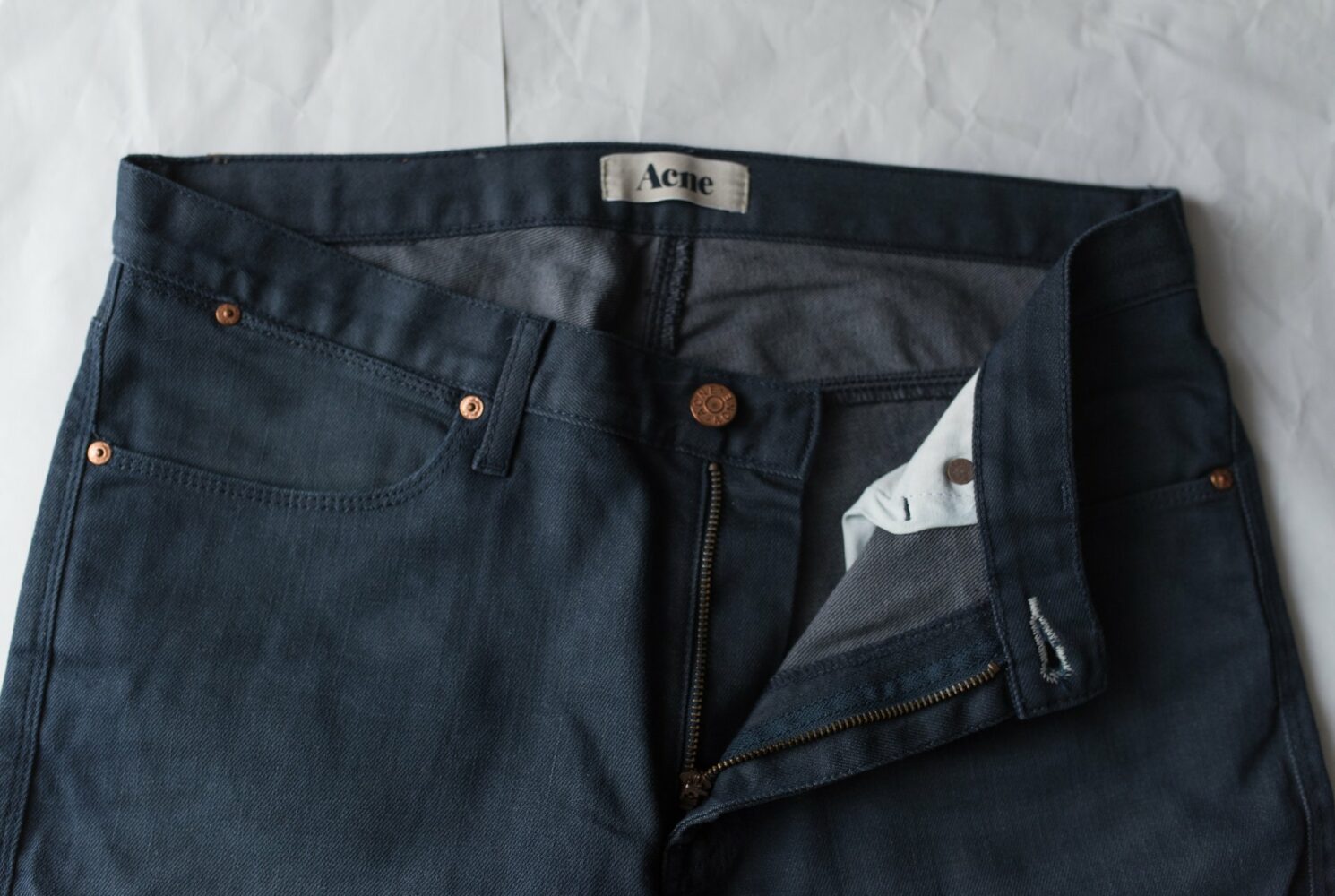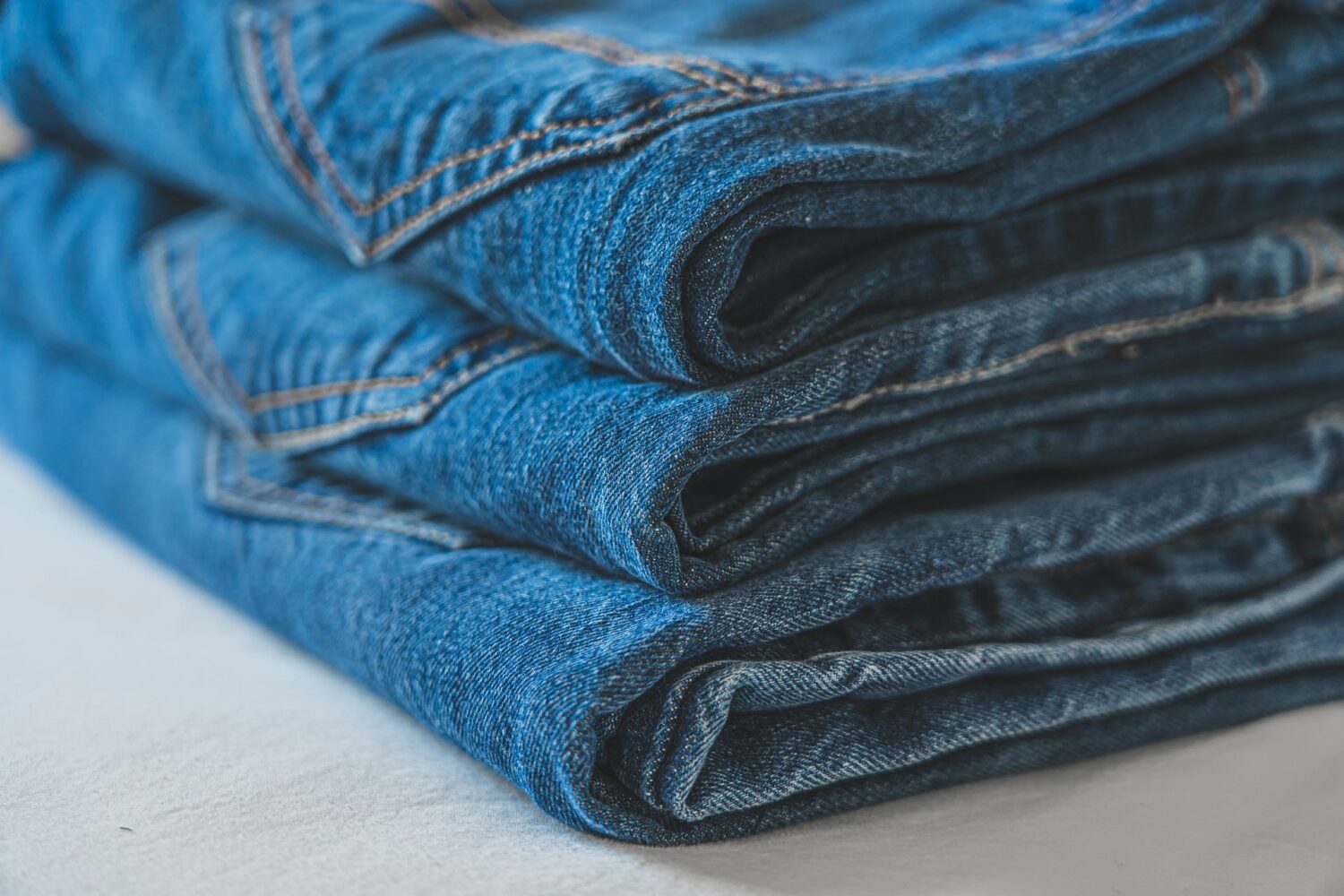If you purchase one of the products recommended in this article, I might receive a small affiliate commission. Thank you for your support!
While you may want to keep too much starch out of your diet, starch is a great way to keep your jeans feeling brand new even when you’ve had them forever. As you wash and wear your jeans over time, you’ll notice that they’ll begin to lose their crispness over time producing a wrinkly, lumpy pair that’s very different from the pair you originally bought.
You could take them to the dry cleaners for a starch and press, but this can become costly especially when you can very easily complete the process at home all by yourself.
Most supermarkets have a lot of options of spray starch and readymade starch solutions or you can even dip into your own pantry to make your own starch solution. Anyone can learn how to starch jeans and you don’t need any special knowledge of laundering or textile care. Just be warned that the higher the elastane content in your denim, which you can find out from the fabric care or laundry label, the more difficult it will be to starch your denim.
Did you know that most dry cleaners use starch not only because of its stiffening capabilities but since dry cleaning doesn’t use any water, the starch is a great way to remove stains and dirt? And it helps prevent further dirt and stains from sticking to the denim.
Read: Why Do People Starch Jeans?
How to starch jeans with spray starch
Commercial starches at your local grocery store will often come in a spray bottle or aerosol can. Before you begin to starch your jeans, you’ll need to wash them right before you apply any product. Since you’re trying to stiffen your jeans you shouldn’t use any sort of fabric softener in the washing process.
If you’re working with stretch jeans, it’s best to dry your jeans flat in order to prevent the jeans from stretching further but line drying or flat drying works just as well for regular denim.
Step 1: Once your jeans are dry, turn them inside out and lay them on a flat surface. You can work on an ironing board or lay an old towel or sheets over the floor or a table.
Step 2: You should check the instructions that come with your spray starch but often the application process requires you to hold the bottle 9 to 11 inches away from your denim and begin spraying. Mist the starch from side to side of the jeans starting at the waist and ending at the hem. Turn them over and repeat the process.
Make sure you don’t oversaturate the jeans so that they become sopping wet. You want them to be damp or moist. Now you can turn the jeans inside out again and repeat the spraying process.
Step 3: With your iron on a medium setting, you can press your jeans to seal in the starch. Begin with the thicker parts of your jeans like the waistband, pocket areas, front fly, and hem, and then complete the legs of the jeans last. This is where you can choose to iron the crease of your jeans or wear them as is.
Read: Why Do People Starch Jeans?
Starching jeans in the washing machine
If you’d like to wash and starch your jeans all in one step then you can opt for liquid starch (or a homemade recipe) and your washing machine. If you’d like to know how to heavy starch jeans with this method then it will also help to use spray starch in conjunction with your liquid starch.
Step 1: Turn your jeans inside out and put them into the washing machine on a cool-warm water setting. Pour in your preferred laundry detergent as usual and then pour your liquid starch into the fabric softener dispenser. Make sure to consult the packet of your liquid starch for the right amount. Most liquid starch brands will have further instructions for the required amounts needed for a light, medium, or heavy starch.
If you are using powder starch, you will need to mix the starch into the water before pouring it into the fabric softener dispenser.
Step 2: Once the wash cycle is complete, you can hang your jeans to dry or dry them flat. Drying them flat is recommended for jeans with any stretch or elastane fibers in order to keep them from stretching in the drying process.
Step 3: Lay your dry jeans on a flat surface such as an ironing board or over a towel on the floor or a table. Following the instructions on your spray starch, dampen the inside of your jeans from side to side starting at the waist and ending at the hem. For further starching, turn them inside out again and repeat the process.
Step 4: With your iron on a medium setting you can now press your jeans and they’re good to go!
How to heavy starch jeans
If you’re wondering how to heavy starch jeans with the spray starch or washing machine methods, that will take a little experimenting. Generally, the more starch you have the heavier your starch will come out but some products can leave starch spots and flakes if you use too much.
Sometimes these flakes and spots can be washed and ironed out but it’s not always guaranteed and this can potentially damage the fibers of your jeans. So make sure to experiment with a scrap of denim or a pair of old jeans you don’t care about. For the best amount of control, it’s best to make your own starch at home instead.
All you need to create your own jeans is 2 tablespoons of cornstarch and 1 cup of boiling water. Mix these together very well and let the water cool before you apply it to your denim. This can also be achieved by boiling the water on the stove and adding the cornstarch to make a slurry.
You can use more cornstarch for heavier starch but do this in small amounts as you experiment towards your ideal level of stiffness. It’s best to work in increments of half a teaspoon to 1 tablespoon.
You can put this solution into a spray bottle, add it to the fabric softener dispenser or try out the soaking method. When adding your starch to a spray bottle, remember to shake the solution often as the starch will sink to the bottom leaving you with a solution that’s more water than stiffener.
Read: How to Soften Jeans
Starching jeans by soaking
For this method, you can use the home starch recipe above or you can make a bigger solution by mixing ½ a cup of cornstarch with 1 cup of cold water mixed with 1 ½ cups of boiled water for dipping. Always ensure that your solution has completely cooled before starching as the heat can cause your denim to shrink.
Step 1: Wash your jeans inside out and dry them completely.
Step 2: Once your jeans are dry, you can lay them on an ironing board flat surface that’s protected with a towel or sheet. Dip a sponge into your starch solution and use that to work the starch evenly into your denim. Make sure that you are just dampening the fabric and not drenching it.
Alternatively, you can dip your jeans into a bucket of the larger cornstarch solution. Don’t leave any section of the jeans in the solution for longer than a few seconds and iron them immediately once removed from the dip.
Step 3: With your iron on a low to medium setting, and with no steam, you can begin to press your jeans. Begin with the thickest areas such as the waistband, front fly, and pocket areas before attending to the leg of the jeans. Take your time with this step and be thorough in order to set in the starch. Just like that, your jeans can probably stand up on their own!
How to crease starched jeans
If you’re starching your jeans in order to get a sharp crease that will stay for a longer period of time then the ironing step is the most important part of the process.
Step 1: Follow the above ironing sections by beginning to iron your jeans at the waistband, pocket, hem, and front fly areas, keeping the leg sections for last.
Step 2: Work with one leg at a time and fold it in half so that the inseam and outseam are in line. Keeping your iron on a low to medium setting, apply pressure on the fold line with your arms, and go over it a few times. You can spray a little bit more starch in this step to achieve extra stiffness before ironing once more.
Step 3: Repeat the process on both legs and then lay your jeans out as normal. You can check if there are any areas that need further pressing. Usually, the upper area near the waist will need a little extra attention and, provided you haven’t produced any starch flakes or spots, you can go over this again with your starch and iron. Now you can enjoy your starched and creased jeans.
If you enjoyed this article, be sure to check out our other blog posts: Best Jeans for a Small Waist and Big Thighs | How to Get Grass Stains Out of Jeans




